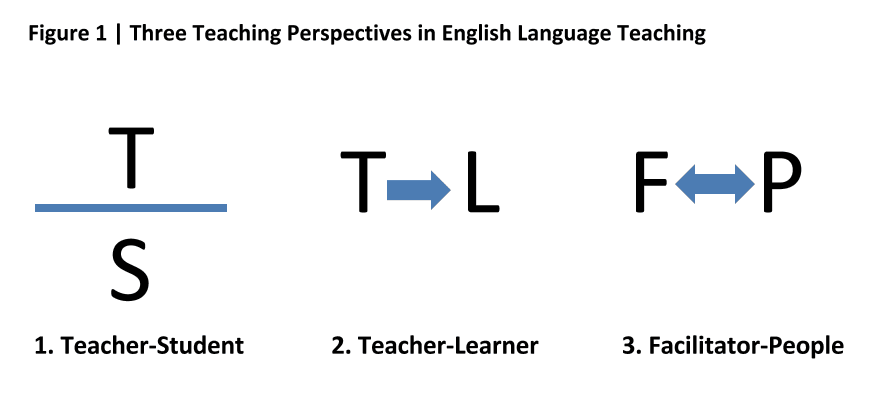As English teachers, our role is to help students achieve their English language goals.
For some ESL students, their goal is to do well on an English proficiency test such as IELTS, TOEIC, or TOEFL.
Some want to study or work abroad. Others want to do their jobs more effectively.
Some want to communicate with international business clients or colleagues. Some want to become more proficient in giving presentations.
For others, it is to be able to participate in the world of the English language.
They want to watch and understand Hollywood movies, chat with foreigners, or converse with people from different countries.
The people we meet in our classes are not so terribly different than ourselves.
We all have needs, plans, and short- and long-term goals. Whatever the need, goal, or desire, people come to us for help with their language goals and pay for that help.
Do our students encounter teachers who treat them with courtesy?
Are the teachers treating students with consideration? Do they learn with teachers who treat them with respect?
Is the teacher focusing on techniques instead of the learner? Do they have a class with a teacher who is driven to complete the lesson?
3 Perspectives on Teaching ESL
Figure 1: below represents three teaching perspectives on how English language teachers see and approach how they teach.
Inevitably, this is how they manage the learning environment.
The Teacher-Student Perspective
The first perspective views class members as simply students “under my authority who should listen to me and follow the lesson that is presenting.”
This teacher teaches the lesson as it is presented without deviation.
He/She tends to be more of an employee than someone given the privilege of teaching.
In this situation, the teacher is the boss and the students are followers.
The teacher presents the lesson material to passive class members who are expected to absorb the information.
The information is information ‘about’ English, without opportunities to use it.
This type of teacher is comfortable with the status quo—with students who attend the class and listen.
Find Accredited Online TESOL courses!
The Teacher–Learner Perspective
The second perspective views class members as learners who should learn English a certain way.
“And why not—I studied and learned teaching methods, and the learner should follow my lead.”
This is a TESOL-trained teacher, but this knowledge is mingled with a traditional mindset.
It is a hybrid perspective where we can view the students as ‘learners.’
Along with the change in terminology, the teacher uses more communicative materials than a Teacher–Student Perspective.
They also utilize lessons that give learners opportunities to use the language, but not always in practical ways.
This perspective sees the ESL classroom as an opportunity to teach people “what I know about the language.”
Here the teacher answers questions ‘about’ the language.
On the surface, it looks good.
Below the surface, it is a classroom filled with people who are not prepared for the outside world they seek to enter.
Read: TESOL Tips: Foster a Social Community in Your Classroom
The Facilitator–People Perspective
The third perspective views class members as people with human objectives.
These people seek help from a professional to achieve their goals.
As such, this teacher collaborates and works with his/her customers.
They adjust lessons to fit their specific (one-on-one) and general (classroom) needs.
This teacher uses every lesson as an opportunity to help people improve by adjusting it to the occasion. They are not simply lessoned ‘deliverers,’ they are lesson ‘adapters.’
They adapt the material to the needs of the moment which are appropriate for the learners. This teacher does not make the decisions by himself/herself.
They collaborate with class members to determine the most enjoyable, efficient, practical, and necessary path to achievement.
Conclusion
A change in perspectives to Facilitator–People works for everybody.
It is a win-win approach to TESOL. Rather than view class members as students or learners only (which tends to have stereotypical connotations), it views students as people with needs.
We can also view them as customers we serve with individual goals.
Remember, we want to establish a connection before expecting perfection; to facilitate rather than dominate in a TESOL environment.
Here, the teacher does not speak to students with exclusive words such as:
tell me…,
listen to…,
look here…,
you should say it like this…,
you must…,
and the like.
The Facilitator–People Perspective offers courtesy, respect, and consideration in class.
The teacher addresses the students with more inclusive words such as:
can you tell me…, let’s listen to…, let’s look here…, you could also say it like this…, you may want to…, and the like.
But that is another story in a future post (stay tuned).
Recommended Reading:
Creating a Learner-Focused TESOL Lesson Plan







